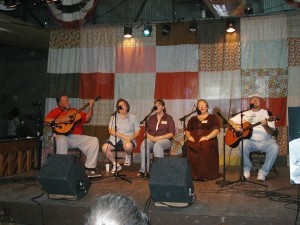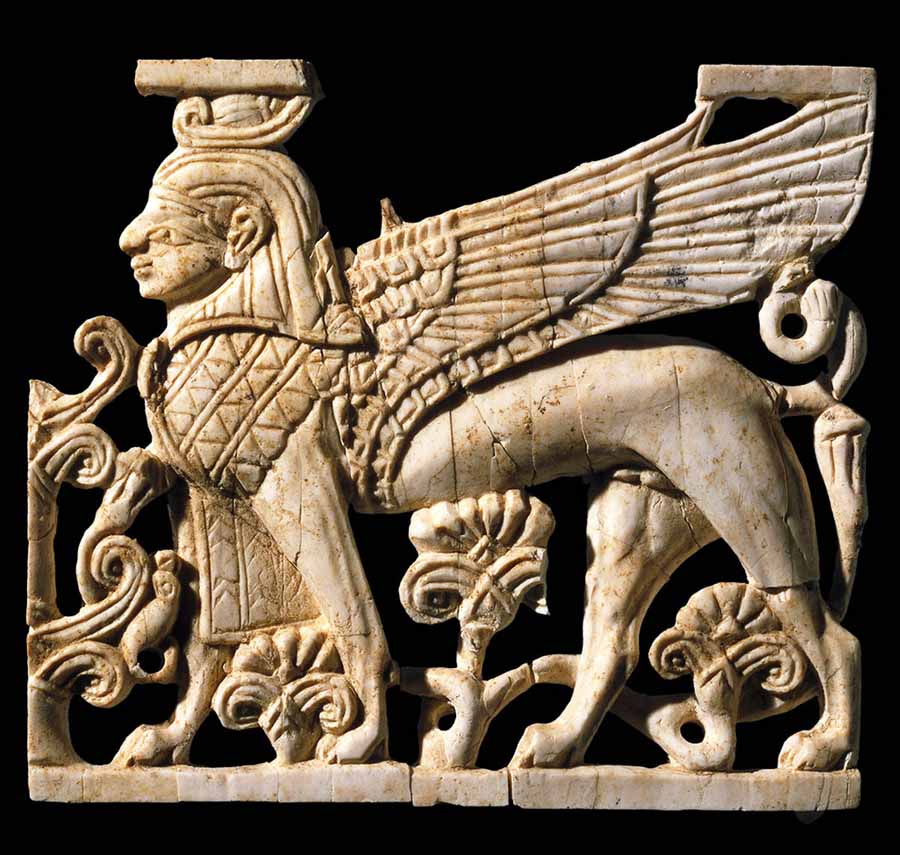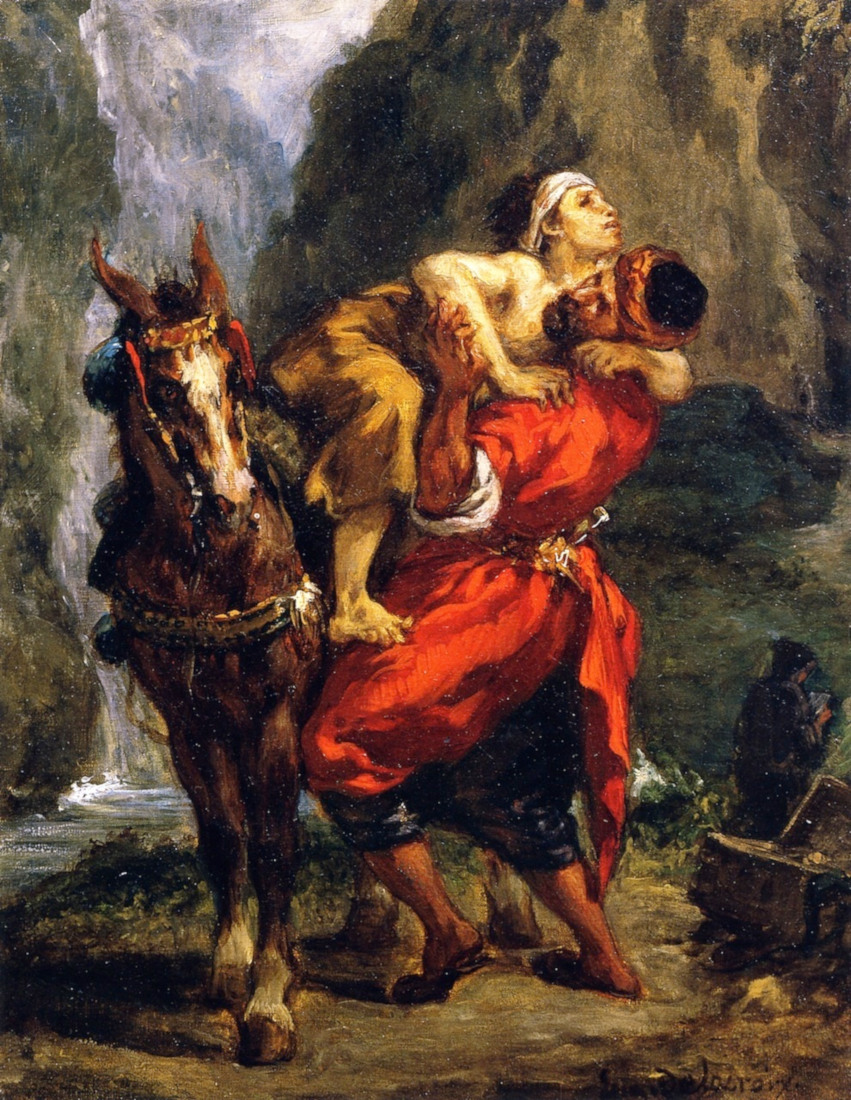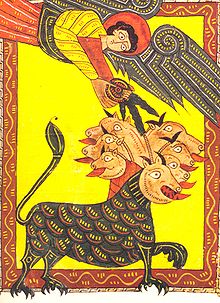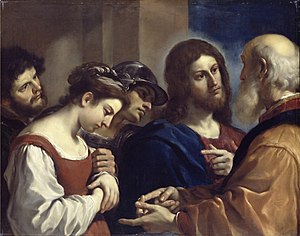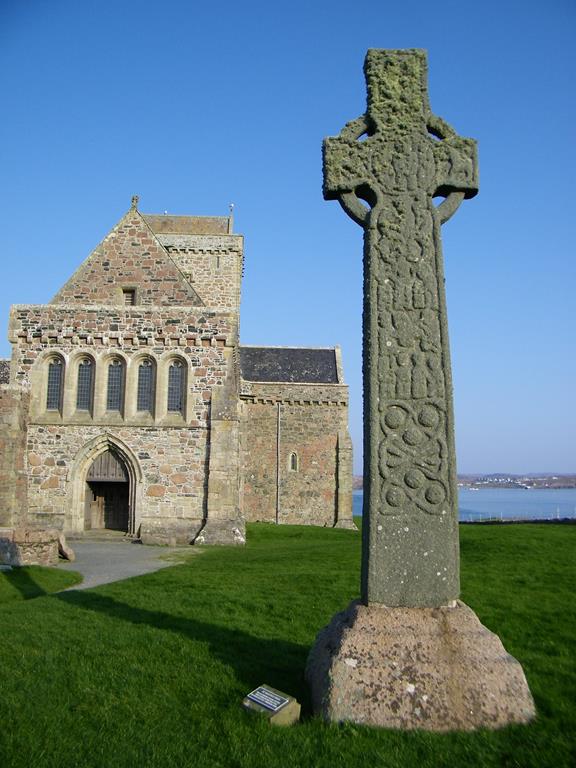In Matthew’s gospel, two names are applied to the Christ before he is even born: Jesus and Emmanuel. Both names figure prominently in Matthew’s account of Jesus’ suffering, death, resurrection, and ascension.
With many students of Scripture, I believe that the best explanation of both the similarities and the differences among the first three gospels (commonly called the Synoptic Gospels due to their parallel structures) is that Mark was the earliest gospel, and was used as a source in both Matthew and Luke. This makes the differences between Mark and Matthew’s versions particularly significant for understanding Matthew’s particular emphases.

In Matthew, as in Mark, Jesus eats a Passover meal with his disciples, breaking the bread and sharing the cup. Matthew’s version follows Mark’s, with one important addition. In Matthew as in Mark, Jesus blesses the bread, and breaking it shares it with his disciples, saying, “Take, eat; this is my body” (26:26). He then takes the cup, gives thanks, and shares it with them: “Drink from this, all of you. This is my blood of the covenant, (just what Mark says) which is poured out for many so that their sins may be forgiven” (26:27-28). That last phrase, only Matthew has. Remember that the angel had said, “you will call him Jesus [that is, Yeshua, or “Savior”], because he will save his people from their sins” (Matthew 1:21). But, how? Only now do we begin to see. Somehow, in his death, Jesus takes upon himself the ugliness and horror of human life, human evil, human sin.
Now we come to the cross. In Matthew, the death of Jesus is described in more detail than in Mark’s gospel. In particular, Matthew has a sequence of three groups of people who mock Jesus as he is hanging on the cross. Their words are important (look particularly at the words in italics). First there were the passers-by (27:39-40), who said, “So you were going to destroy the temple and rebuild it in three days, were you? Save yourself!” (Remember the name Yeshua, “the Savior”) “If you are God’s Son, come down from the cross.” (Remember the name Immanuel, “God with us”).
Next the religious leaders, the chief priests, the scribes, the elders mock him, too: “He saved others, but he can’t save himself. He’s the king of Israel, so let him come down from the cross now. Then we’ll believe in him. He trusts in God, so let God deliver him now if he wants to. He said, ‘I’m God’s Son’” (27:42-43).
Finally, the bandits crucified on either side of Jesus “insulted him in the same way” (27:44). Of course, the powerful irony is that he is on the cross because he is Yeshua. He will not save himself because he is the savior, enduring in full the ugliness of human evil and sin. “Come down from the cross if you are the son of God?” It is because he is the son of God that he remains on the cross. That is why he, Immanuel, is here. He is God with us–God with us even here, even at death’s door, even in the depths of human ugliness and depravity.
As in Mark, so in Matthew, Jesus cries out, “Eli, Eli lema sabachthani?” (27:46)–combined Hebrew and Aramaic (see the May 28th blog) for “My God! My God, why have you left me all alone?” (Psalm 22:1). But the mocking crowd misunderstands him (Matt 27:47-49). Someone says, “He’s calling Elijah;” someone else says “Let’s see if Elijah will come and save him.” But no one will save him, because he is determined to save everyone. It is by his death that he brings salvation.

Matthew has one more scene to set before us. After his resurrection from the dead, Jesus addresses the disciples one last time:
I’ve received all authority in heaven and on earth. Therefore, go and make disciples of all nations, baptizing them in the name of the Father and of the Son and of the Holy Spirit, teaching them to obey everything that I’ve commanded you. Look, I myself will be with you every day until the end of this present age (Matt 28:18-20).
From the very beginning of his life, Jesus is the son of God, born of a virgin and given the name Immanuel: God with us. Jesus is the obedient son of his Father in all things. In Matthew’s gospel, the cross is the ultimate act of Christ’s obedience. At the cross, Jesus is still Immanuel, God with us, the obedient son of God. Yet in Matthew, the cross is also the means of our salvation; at the cross, he is Yeshua, Jesus, Savior. Somehow, his death and resurrection takes up our death and our disobedience, and does away with it.
The apostle Paul puts it this way:
If we were reconciled to God through the death of his Son while we were still enemies, now that we have been reconciled, how much more certain is it that we will be saved by his life? And not only that: we even take pride in God through our Lord Jesus Christ, the one through whom we now have a restored relationship with God (Romans 5:6-11).
In Christ’s death, the gap between humanity and divinity is bridged: we are reconciled (Greek katalasso) to God. In Christ’s resurrection, we are given the hope and the promise of our own deliverance from death. By entering into our life, and even into our death, Jesus draws God near to us, and us near to God. He brings God’s divinity down to where we are, and lifts our humanity up to where God is.
St. Gregory of Nazianzus expressed this idea quite well: “That which was not assumed is not healed; but that which is united to God is saved” (to gar aproslepton, atherapeuton ho de henotai totheu, touto kai sozetai). By his life, Christ as Immanuel brings God to us and us to God. By his death, Christ as Yeshua enters our death and evil and abolishes its power forever. By his resurrection and ascension, Christ completes the meaning of both his names. He is Jesus, our Savior, who destroys our death. He is Immanuel, God with us, who makes us fully “at one” with God. He is our atonement.
AFTERWORD:
I owe the insight into the names in Matthew’s gospel that I have shared here to my colleague John Blumenstein, who completed his Ph. D. in New Testament while I was working on mine in Hebrew Bible. The Blumensteins were our neighbors in campus housing, and our dear friends–in fact, it was John who prompted me to apply for my first teaching job, and started me down this trajectory that my ministry has followed for going on 25 years. Wherever you are today, John, and whatever you are up to–thank you!

